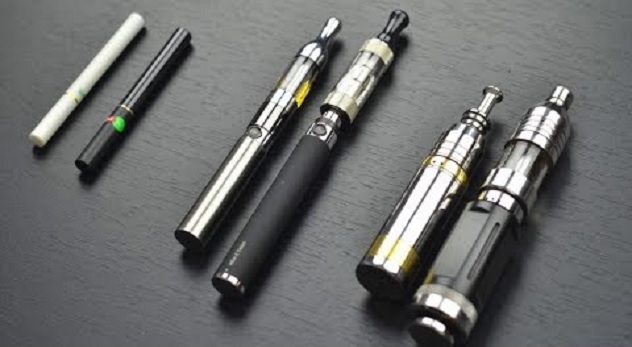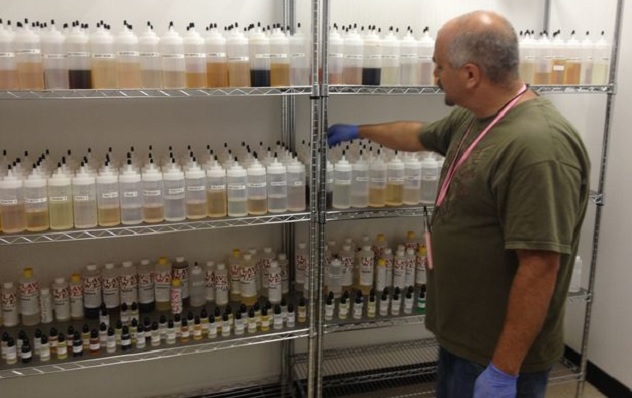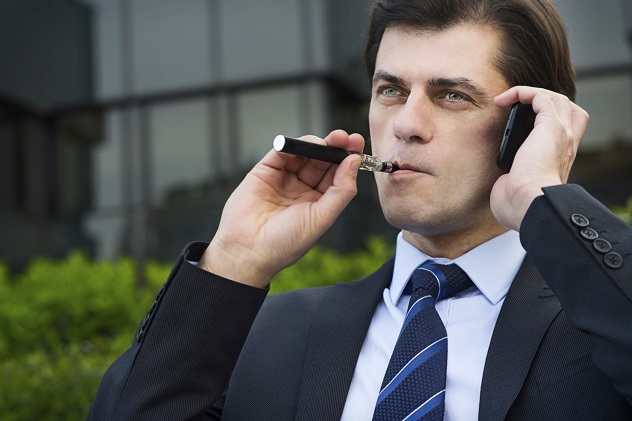 Weird Stuff
Weird Stuff  Weird Stuff
Weird Stuff  Mysteries
Mysteries 10 Tragic Disappearances and Deaths in Joshua Tree National Park
 History
History 10 Ways Childhood Really Sucked in the Old West
 Music
Music 10 Name Origins of Famous Bands from the 1990s
 Religion
Religion 10 Biggest Turnarounds by the Catholic Church
 Weird Stuff
Weird Stuff 10 Unbelievable Times Laws Had Unintended Consequences
 Humans
Humans Ten Historic Women Who Deserve Way More Credit Than They Got
 Movies and TV
Movies and TV 10 Films That Spawned Major Lawsuits
 History
History Ten Times Towns Were Wiped Off the Face of the Earth
 Creepy
Creepy 10 of the Most Disturbingly Haunted Public Houses in the UK
 Weird Stuff
Weird Stuff 10 Niche Subcultures That Are More Popular Than You Might Think
 Mysteries
Mysteries 10 Tragic Disappearances and Deaths in Joshua Tree National Park
 History
History 10 Ways Childhood Really Sucked in the Old West
Who's Behind Listverse?

Jamie Frater
Head Editor
Jamie founded Listverse due to an insatiable desire to share fascinating, obscure, and bizarre facts. He has been a guest speaker on numerous national radio and television stations and is a five time published author.
More About Us Music
Music 10 Name Origins of Famous Bands from the 1990s
 Religion
Religion 10 Biggest Turnarounds by the Catholic Church
 Weird Stuff
Weird Stuff 10 Unbelievable Times Laws Had Unintended Consequences
 Humans
Humans Ten Historic Women Who Deserve Way More Credit Than They Got
 Movies and TV
Movies and TV 10 Films That Spawned Major Lawsuits
 History
History Ten Times Towns Were Wiped Off the Face of the Earth
 Creepy
Creepy 10 of the Most Disturbingly Haunted Public Houses in the UK
10 Facts That Everyone Gets Wrong About Vaping
Longtime readers of this site may be familiar with me as the guy who occasionally shows up to contribute a lot of creepy and weird lists under a silly byline, always using the royal “we” so as to not take full responsibility for the creepy and weird information being presented. They may also notice that my output has slowed considerably, and that I am—for now, at least—actually referring to myself in the first person. Allow me to explain.
SEE ALSO: 10 Popular Ideas That Turned Out To Be Really Dangerous
About a year ago, a couple of good friends invited me to help them run a vape shop and eventual e-juice manufacturer in my hometown (Louisville, Colorado). We in this industry believe vaping to be potentially enormously beneficial to public health, and we’ve been dismayed to see it take a pretty stern beating in the public arena. This, along with the FDA’s recent ruling in favor of strict regulation and all of the various local ordinances popping up, have prompted me to action.
Well, to list-making at any rate. Because unless you go out of your way to be informed, chances are you’ve been exposed to more misinformation than truth about what the media calls “e-cigs” and what most others call “vaping.” Why is that, by the way? Glad you asked.
10Two Completely Different Products Are Referred To As “E-Cigs”

When most people think of an electronic cigarette, they think of the product pictured above on the far left. They look like regular (“analog”) cigarettes, you buy them at a gas station, and (if you buy Vuze or Blu, the two most popular brands) they are made by tobacco companies—Imperial Tobacco and RJ Reynolds, respectively. The cartridges in these come pre-filled, and must be replaced with new cartridges. They have very limited flavor selections, and are ostensibly a simple—perhaps healthier—replacement for cigarettes.
Yet despite their impressive sales numbers, the vast majority of those who permanently quit smoking in favor of vaping do not use them. My store doesn’t even carry them. In fact, no vape shops do—just gas stations and convenience stores.
In an actual vape shop, you’ll find products like those in the middle (commonly referred to as APVs—Advanced Personal Vaporizers—or “Vape Pens”) and on the right (“Vape Mods”). APVs (most made by Chinese companies like Innokin) contain electronics allowing the user to regulate the power level, produce a moderate amount of vapor, and are generally priced under $100. Mods (mostly made by American companies like Surefire or various small Greek and Filipino companies) are for use with user-rebuildable atomizers, can potentially produce tons of vapor, and can be quite expensive.
Users are typically introduced to vaping with the mass-market products on the left, move to the middle for a more satisfying vape (as the analog imitators are very high nicotine and low vapor), and end up on the right when they really start wanting more flavor and less nicotine (more on that shortly). This is likely why, as sales of mods or “open system” devices have increased, sales of disposables have plummeted (and why tobacco companies that make disposables would rather mods just go away altogether).
This is important because lawmakers and the media absolutely do not differentiate between the two products, yet there is a world of difference. When they claim that “nobody knows what’s in these things,” it makes me wonder exactly what things they’re talking about, since . . .
9E-Liquid Ingredients Are Not A Mystery

My title at my company is Juicemaster General. I know, it’s an awesome title—I made it up. It means that I am responsible for every bottle of e-liquid that leaves one of our wholesale customers’ shelves, and I make 95 percent of it myself by hand. There are only four ingredients, and we did not find a single one of them on the surface of the Moon.
E-liquid begins with the main base, vegetable glycerin. We (and most other manufacturers) use certified organic VG—the glycerin doesn’t carry flavor very well, but does produce a lot of vapor. The next ingredient is propylene glycol—this is usually cited by alarmists as being a “main ingredient in antifreeze.” This is incorrect, as they’re willfully confusing it with diethylene glycol, which has actually been found in mass market e-cig products. I absolutely do not add any of that to my liquid because I do not make antifreeze.
Propylene glycol—or PG—is a main ingredient in albuterol, or asthma inhalers, and is perfectly safe to inhale when vaporized. PG is thinner than VG, and carries flavor very well—the next ingredient, flavorings, are usually suspended in PG. Flavorings are food-grade, can be natural or artificial, and are limited only by the imagination of the juice maker.
A note about these ingredients—the “we don’t know what’s in these things” arguments dissolve in the face of numerous studies like these, showing that not only do we understand completely what’s in these things, but we also have a solid understanding of their (negligible) toxicity when vaporized.
The final ingredient is pharmaceutical-grade nicotine, and all juice manufacturers make their product available in varying nicotine strengths. They range from ridiculous (up to 36 milligrams per milliliter—basically a Lucky Strike with the filter ripped off) all the way down to nothing at all. That’s right, zero. So what’s the point of selling a “tobacco product” with no nicotine, you ask?
8Many Vapors Use Very Little To No Nicotine

You may be tempted to think I’m full of crap, but our sales figures don’t lie: In our business, e-liquid in very low to zero nicotine strength (6 mg per ml and below) outsells medium-to-high strengths (12 mg and above) by better than a two-to-one margin. Also, considering that literally every single e-liquid manufacturer offers zero-nicotine liquid—and at least one makes only that—it’s safe to say that there would be no supply if the demand did not exist. I personally had quit smoking for two years before I started vaping, and I use zero-nicotine liquid daily.
There are reasons for this. Most users start off at a high nicotine level when they are still getting off of analog cigarettes. When a beginner graduates to a device that produces more vapor, they don’t need as high a concentration of nicotine to be satisfied. Then, they may want to further “step down” (decrease the nicotine strength) once they find that high nicotine actually screws with the flavor of an e-liquid. Simply put, the less nicotine you use, the better your liquid will taste and, despite what media pundits seem to think, it turns out that even adults like things that taste good.
And I don’t mean “kid-friendly” flavors like watermelon and blueberry—although I do have a good blueberry vape if that’s your bag. One of our blends is an extremely complex mixture of oatmeal, rum, raisin, and anise. Another is an ice-blue, damn near unidentifiable tart-sweet menthol blend called Heisenberg. We’re not going for the kiddie market here.
You may be picking up that I’m referencing the many, many media assertions that we’re “targeting” children—trying to hook in kids with sweet flavors, and maybe even get them smoking. Say, did you know that . . .
7Nobody Wants Minors Buying These Products

In 10 states right now—including mine—it is illegal to sell electronic cigarettes or related products to minors. Legislation is pending in a dozen other states and will doubtless be introduced in more states—and possibly at a federal level—soon.
This seems like reasonably quick action for such a young industry, but that’s because it’s common sense. We haven’t challenged any of this legislation because we don’t want to sell to minors. Sometimes, we’re downright paranoid about doing so. We don’t need to create new customers. Ninety-five percent of our customers are ex-smokers, meaning the tobacco industry has created plenty of customers for us and will continue to do so for a long time. We know that we are selling an adult product, and we want to stay in business. We card anybody who doesn’t look over 25 years old, and I know of no other shop—in my state or any other—that doesn’t do the same.
Much is made of how more teenagers are trying e-cigs or vaping—a common statistic shows that use among teens doubled from 2011 to 2012. While this is true, the statistic omits a lot of relevant information. The e-cig/vaping industry itself more than doubled in size during that year, meaning all use of these products doubled and not just teen use. During the same period, teen use of smokeless tobacco—a product which is not new, is considered the direct opposite of fashionable, and is notably never accused of marketing to kids—also increased by about 30 percent.
Finally—and there is literally no data to be found on this, perhaps because it directly contradicts the current media line on these products—I personally have dealt with dozens of parents who wanted to buy a device for their teenager, to help them get rid of smoking habits they picked up as even younger teenagers. We can’t sell them for this stated purpose, but this factor is conspicuously absent from teen vaping statistics. This could be remedied with one question added to the survey: “Where did you get your first e-cigarette?”
Of course, with the aforementioned state laws in the works, sales to minors will soon be illegal everywhere. But as with the FDA’s proposed regulation of e-cig and vaping products, this likely would have been the case without government intervention. Practically nobody outside of the industry has been made aware that . . .
6The Industry Has Already Begun To Self-Regulate

I have never made a bottle of e-liquid—nor seen one made by anyone else—that does not contain language like, “Warning: May contain nicotine. Keep away from children and pets. For use by adults 18+.” (That is the exact language on our labels.) Also, most e-liquid manufacturers either shrink-wrap their bottles or use child-resistant caps—in fact, suppliers of certain sizes of child-proof caps in the United States are having trouble keeping them stocked due to increased demand from e-liquid makers. Most larger juice manufacturers—and some of the smaller ones—have gone full-on clean room with their manufacturing.
Nobody is telling us to do these things—at least not yet. Even without a governing body, however, we’ve adopted common sense standards that one would hope to see from such an industry—and at least a couple organizations hope to be the governing body to unify and impose these standards.
Why? It seems to me some people—mainly legislators and other policy makers—forget that our industry and the tobacco industry operate on fundamentally opposed principles. The tobacco industry wants to hook as many people to nicotine as possible—preferably while young—using whatever means permitted by law. Our industry wants to get people off of nicotine while providing an enjoyable alternative to smoking.
We want our product to be seen as safe and effective—because we believe it to be—and any action that undermines that image is seen as bad for the industry. One would be hard-pressed to find an e-liquid manufacturer that doesn’t label its bottles with warnings, use child-proof caps, shrink-wrap their bottles, or all three—these things are positive selling points when we’re soliciting new wholesale customers.
Everyone agrees that regulation in some form is needed. But when the FDA’s first proposal—by its own analysis—will put everyone but Big Tobacco out of the e-cig business, there’s a problem. According to the FDA, preparation and submission of an application for each new product before it hits the shelves would take 5,000 hours and cost $300,000. By “product,” they mean one flavor of liquid in one nicotine strength. By that definition, my company currently manufactures 155 “products.” Even without doing the math, this is clearly not a reasonable proposal. We’re perfectly willing to talk with the federal government about regulating our industry, but having a gun to your head is not how anyone wants to begin a negotiation.
Now, about that safety and efficacy thing . . .
5The Vapor Is Far Less Harmful Than Cigarette Smoke

The average person has probably heard two things about the vapor produced by electronic cigarettes: either it’s perfectly harmless, or it’s worse than cigarettes, forest fires, and nuclear explosions combined. You’ve probably heard more than once that “not enough studies have been done.”
Here’s where my job as author of this article gets really easy. In case you don’t have time to read the linked studies in their entirety, allow me to quote:
A 2012 Greek study entitled Acute effects of using an electronic nicotine-delivery device on myocardial function: comparison with regular cigarettes: “Absence of combustion and different chemical composition, leading to less toxic chemicals created and absorbed . . . electronic cigarettes may be a safer alternative to tobacco cigarettes.”
A 2012 research paper entitled Levels of selected carcinogens and toxicants in vapor from electronic cigarettes: “We found that the e-cigarette vapors contained some toxic substances. The levels of the toxicants were 9–450 times lower than in cigarette smoke and were, in many cases, comparable with trace amounts found in the reference product . . . our findings are consistent with the idea that substituting tobacco cigarettes with e-cigarettes may substantially reduce exposure to selected tobacco-specific toxicants. E-cigarettes as a harm reduction strategy among smokers unwilling to quit, warrants further study.”
A 2012 study entitled Comparison of the effects of e-cigarette vapor and cigarette smoke on indoor air quality: “For all byproducts measured, electronic cigarettes produce very small exposures relative to tobacco cigarettes. The study indicates no apparent risk to human health from e-cigarette emissions based on the compounds analyzed.”
You may not have realized this had been studied so extensively, and I could link to many more. I’d like to draw attention to that last study, however—the one focusing specifically on “secondhand” vapor. The first inroads being made into legislating our industry are arguing that vaping should be restricted to the same areas as smoking as the vapor isn’t safe. Across the board in our industry, though, the feeling is that . . .
4Public Vaping Is A Largely Manufactured Issue

The studies that I’ve linked to above obviously constitute evidence that concerns about secondhand vapor in public places are overstated—if not completely unfounded—and there will doubtless be much more study done in this area. In enclosed spaces—government offices and businesses—there should be no need for any law.
The legislation being bandied about from coast to coast to everywhere else in the United States ignores how such establishments are completely within their rights to establish their own policies about such things. Proponents of this type of legislation always fail to consider vape shops when talking about it, but being unable to vape in a vape shop means not being able to try liquid before you buy. This is pretty much why people come to vape shops in the first place rather than ordering liquid online.
There is also suspicion in our community that legislation like this is part of a two-pronged federal and local approach aimed at putting the little guys out of business. It looks like the next wave of local ordinances will be aimed at banning the sale of e-liquid containing flavors. Naturally, it’s all about the children, which I’ve previously mentioned is just plain wrongheaded.
But you see how, from the inside, it looks like we’re being squeezed from every angle until we can no longer operate in any way, despite the vast majority of the scientific analysis of our product being favorable. And while Big Tobacco has mixed feelings about this phenomenon—they don’t want e-cigs to go away, they want us to go away so they can have the entire market to themselves—the major pharmaceutical companies are willing to play super dirty to crush vaping altogether, for a very simple reason.
3Vaping Does Help Smokers Quit

As our industry continues to grow, even mainstream publications are being forced to concede that there is some evidence that electronic cigarettes might be effective in helping smokers to quit. We have known this for some time. Once again, I’ll let the evidence speak for itself:
“Most participants (72 percent) were former smokers, and 76 percent were using e-cigarettes daily. At baseline, current users had been using e-cigarettes for three months, took 150 puffs per day on their e-cigarette and used refill liquids containing 16 mg/ml of nicotine, on average. Almost all the daily vapers at baseline were still vaping daily after one month (98 percent) and one year (89 percent). Of those who had been vaping daily for less than one month at baseline, 93 percent were still vaping daily after one month, and 81 percent after one year. In daily vapers, the number of puffs per day on e-cigarettes remained unchanged between baseline and one year. Among former smokers who were vaping daily at baseline, 6 percent had relapsed to smoking after one month and also 6 percent after one year.”
“In a large, international survey (emphasis mine) of current, former, or never users of e-cigarettes, 72 percent of users reported that e-cigarettes helped them to deal with cravings and withdrawal symptoms, 92 percent reported reductions in their smoking when using e-cigarettes, and only 10 percent reported that they experienced the urge to smoke tobacco cigarettes when using the e-cigarette. Moreover, of more than 2000 former smokers in this survey, 96 percent reported that the e-cigarette helped them to stop smoking.”
“In smokers not intending to quit, the use of e-cigarettes, with or without nicotine, decreased cigarette consumption and elicited enduring tobacco abstinence without causing significant side effects.”
Compare this to a truly negligible success rate for traditional nicotine replacement therapy like the patch and gum—upon which some pharmaceutical companies hang their hats—and it’s easy to see where the opposition comes from. Perhaps this is why the United States Food and Drug Administration is pushing legislation that will hand the reins of our industry over to Big Tobacco—those staunch guardians of public health—while putting companies like mine six feet under.
Meanwhile, some of the actual guardians of public health are already coming around on the issue.
2Many Health Organizations Recognize The Benefits

And they’re starting to say a lot of things like this:
American Council on Science and Health: “Tobacco firms already control 99 percent of the nicotine supply, and the firms could soon dominate the growing e-cigarette market. Unless constrained by the laws of the country concerned, tobacco firms could raise electronic cigarettes prices and their profit, decreasing the incentive for smokers to switch to safer products, and protecting firms’ tobacco cigarette sales revenue from competition.”
Royal College of Physicians, London: “On the basis of available evidence, the RCP believes that e-cigarettes could lead to significant falls in the prevalence of smoking in the UK, prevent many deaths and episodes of serious illness, and help to reduce the social inequalities in health that tobacco smoking currently exacerbates.”
Action on Smoking and Health, United Kingdom: “Electronic cigarettes are proving more attractive to smokers than NRT, while providing them with a safer alternative to cigarettes. There is evidence that they can be effective in helping smokers quit, and little evidence that they are being used by never smokers.”
It seems that when impartial public health organizations look at the available, impartial, peer-reviewed evidence, they tend to reach the same conclusion: More long-term studies should be undertaken but, based on what we’re seeing here, vaping is far, far safer than cigarettes and help people quit smoking quite effectively.
But what’s that? You say you’ve heard six dozen talking heads on TV saying that literally no studies have been done on e-cigs? Why, here’s a recent Chicago Tribune article that flat out states, “No studies have been done to examine the safety of e-cigarettes. As a result, there is no evidence that doctors can use to assess the impact this product may have on a person’s body. Also, no convincing evidence shows that e-cigarettes are useful in helping people to eventually stop smoking.”
The Chicago Tribune has just lied through its teeth. As I’ve demonstrated repeatedly throughout this list . . .
1Tons Of Studies Have Been Done

Just tons of them. All the ones I’ve linked here—and many more—demonstrate that these products are far less toxic than cigarettes, more effective than pharmaceutical smoking cessation products, and pose no risk to bystanders. All the information is there but hard to find because it is largely marginalized, taken out of context, or ignored by the media. Many of the links I’ve used are compiled here, and this database is added to regularly—the ever-growing pile of evidence that the media is only giving you one side of the story.
I hope I’ve been reasonably effective in giving you the other side of the story. And now, back to our regularly scheduled lists.








